Zaragoza
The city of Zaragoza in Aragon has drawn me again and again over the last 5 or 6 years. My initial visit was prompted by conversations with a clerk at a downtown Denver post office combined with engravings I had seen in old books of the remarkable “Leaning Tower of Zaragoza.”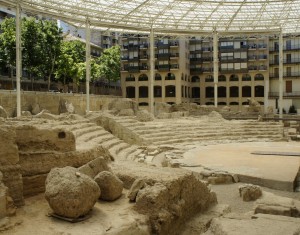
Once there, I became more personally aware of the diverse history and cultural offerings of the town. Early visits made me aware of the Roman heritage, as well as its remarkable struggles in what is known as the Spanish war of independence- the bloody battles to rid the peninsula of Napoleon’s troops.
Il Trovatore
A monumental bu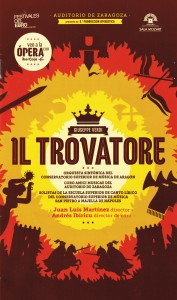 ilding of note in Zaragoza is the “Aljafería”- constructed in the middle of the eleventh century at the behest of Al-Muqtadir. In addition to its architectural significance, and ornate beauty, it is the setting for parts of “Il Trovatore”, Verdi’s famous opera.
ilding of note in Zaragoza is the “Aljafería”- constructed in the middle of the eleventh century at the behest of Al-Muqtadir. In addition to its architectural significance, and ornate beauty, it is the setting for parts of “Il Trovatore”, Verdi’s famous opera.
Well, on my brief stopover in Zaragoza as I “took the long way home”, I saw posters announcing that Il Trovatore was to be performed in Zaragoza the following week. Well, I confess that I had never been to an opera in my life. But how could I pass up this opportunity? Il Trovatore in Zaragoza!
As soon as I got back to Xàtiva, I made the arrangements. I bought a ticket to the opera online, secured train reservations to get me there, and booked a hotel room. Ah! But I had nothing to wear! It being mid-summer, I decided to abandon any thought of a suit or sport coat, and made hasty acquisition of a tie and suitable tie clip. I was ready. Timing of my arrival and stay in Zaragoza allowed me to first attend the Alfonsadas festival in nearby Calatayud.
train reservations to get me there, and booked a hotel room. Ah! But I had nothing to wear! It being mid-summer, I decided to abandon any thought of a suit or sport coat, and made hasty acquisition of a tie and suitable tie clip. I was ready. Timing of my arrival and stay in Zaragoza allowed me to first attend the Alfonsadas festival in nearby Calatayud.
Compromise of Caspe
As always, I picked up a copy of the local newspaper. It was filled with articles about the 600th anniversary of the “Compromise of Caspe”. The papers had been going on and on about this the week before as well. I had never heard of it before, but the basic story is this- King Martin, ruler of the Kingdoms of Aragon and Valencia, died in 1410. Hi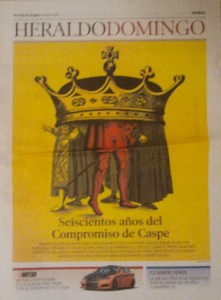 s domain also included Barcelona, Sicily, Sardinia, Corsica, and parts of what is now southern France. Martin’s only son had died previously, and there was no clear heir to the throne. Spain’s history is dotted with wars fought between disputing contenders for succession to the throne. In this case there were about a half dozen powerful men vying to become king. In a rather inspired approach, a group of nine respected dignitaries were appointed with the task of resolving the dispute and selecting Martin’s successor. This process and their decision took place in 1412, and they named Ferdinand I (Grandfather of the Ferdinand who figures in the story of Christopher Columbus). In spite of these measured deliberations, armed conflict did occur. One of the losing pretenders to the throne, the Count of Urgel, sought to impose his claim through force. However he was defeated and imprisoned.
s domain also included Barcelona, Sicily, Sardinia, Corsica, and parts of what is now southern France. Martin’s only son had died previously, and there was no clear heir to the throne. Spain’s history is dotted with wars fought between disputing contenders for succession to the throne. In this case there were about a half dozen powerful men vying to become king. In a rather inspired approach, a group of nine respected dignitaries were appointed with the task of resolving the dispute and selecting Martin’s successor. This process and their decision took place in 1412, and they named Ferdinand I (Grandfather of the Ferdinand who figures in the story of Christopher Columbus). In spite of these measured deliberations, armed conflict did occur. One of the losing pretenders to the throne, the Count of Urgel, sought to impose his claim through force. However he was defeated and imprisoned.
A Night at the Opera
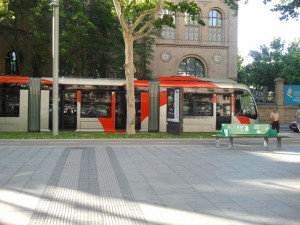 As curtain time grew near, I headed from my hotel room across town to the Zaragoza Auditorium. As I took my seat I was relieved to see only a few men wearing jackets. So I would not be singled out for dress-code ridicule. I waited for the curtain to rise. Since the opera is in Italian, I thought I should read the program, and learn the full story I was about to see. It is a twisted tale of love, rivalry, betrayal, and mistaken identity.
As curtain time grew near, I headed from my hotel room across town to the Zaragoza Auditorium. As I took my seat I was relieved to see only a few men wearing jackets. So I would not be singled out for dress-code ridicule. I waited for the curtain to rise. Since the opera is in Italian, I thought I should read the program, and learn the full story I was about to see. It is a twisted tale of love, rivalry, betrayal, and mistaken identity.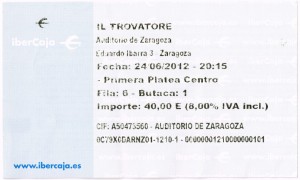
The power of the orchestra and singing was overwhelmingly beautiful. I enjoyed the performance completely, and when it was done, I headed back to my room.
Linkage
On the train, heading home, I read more of the articles about the Compromise of Caspe. Suddenly it came together. I was surprised that it had not been explicitly pointed out in the program. The story of Il Trovatore is directly related to the Compromise of Caspe and struggle over the succession to the throne. Manrico, the “troubadour” in the story, is a follower of the Count of Urgel, fighting his losing battle to usurp the throne. Not only had I seen the opera in the city that figures in the story, but I was seeing it on the 600th anniversary of the event central to the story. (In fact, the night I attended was 600 years to the day after the decision so select Ferdinand had been reached.)
Footnote- a final convergence
A week after the opera, I was talking with my good friend Rafa, as we walked toward my house. We had chatted about a variety of topics and I began to explain my experience at the opera, and the convergence of location and anniversaries. Spanish history is longer and far more complex and convoluted than American history. It is quite difficult for most to keep track of more than little pieces. When I mentioned the Compromise of Caspe, Rafa drew a blank. I continued my story, and got to the part where Manrico, the troubadour, was a partisan fighting for the Count of Urgel. Rafa stopped in his tracks and gave me a peculiar, questioning look with a tilted head. “The Count of Urgel?” he asked me. “Did you say the Count of Urgel?” I assured him that he had heard correctly. Rafa looked at me and pointed to Xàtiva’s castle, a half mile up the hill. “The Count of Urgel was held prisoner in that very castle until he died!”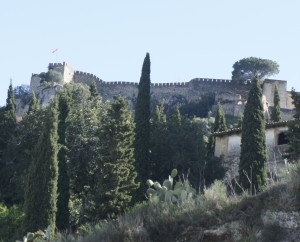
This convergence of the fictional story of the opera, set in a real historical context, 600 years ago, linked to Zaragoza, had now connected back to the castle that I can see from the bedroom of my house in Xàtiva. I smiled as we continued down the street.
